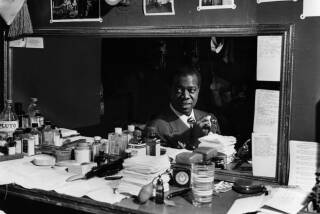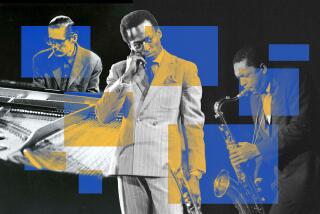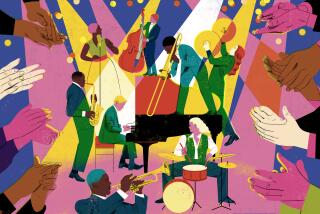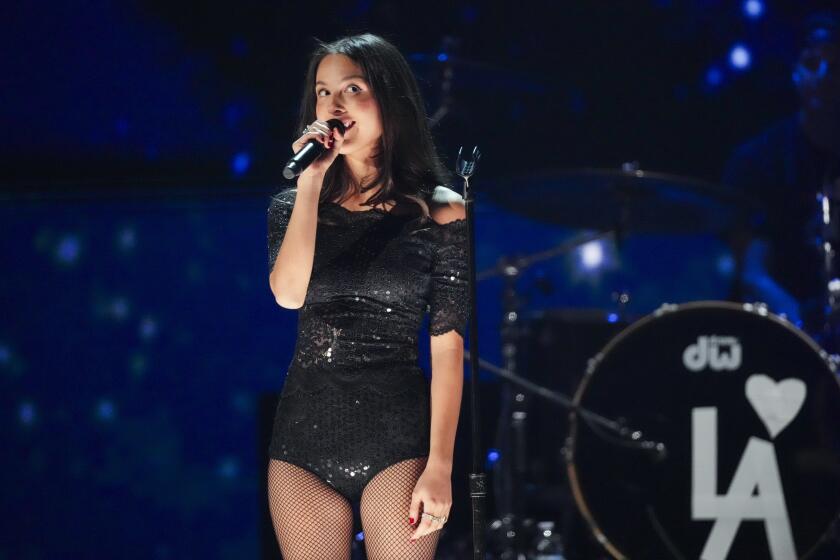An Aptly Titled Musical Bargain
- Share via
Mainstream jazz has become a kind of all-purpose definition generally encompassing the music that emerged in the period between the end of World War II and the widespread entry of electronic instruments (mostly keyboards and electric bass) in the late ‘60s. Not much more than two decades in scope, the period nonetheless produced major artists (Thelonious Monk, Charlie Parker, Miles Davis, John Coltrane, Dizzy Gillespie, Max Roach, etc.), an extensive catalog of music, and stylistic influences that continue into the present.
Producer Joel Dorn’s 32 Jazz has concentrated upon rediscovering, reissuing and rerecording music from this important jazz era since it arrived on the scene in 1996. And this three-CD set is a celebratory assemblage--with 32 tracks, appropriately--of some of the impressive performances the company has preserved in its now extensive catalog.
The set is a bargain, with more than three hours of music at the suggested retail price of $19.98. But the collection (mostly from from the defunct Muse and Landmark labels) would be worth having at twice the cost. It is, in sum and individually, an utterly fascinating compendium of mainstream music, ranging widely from organ blues and bebop to ballads and edgy, outside improvising.
The highlights come one after another. Just to note a few of the many splendid tracks: Kenny Barron in a 1975 solo rendering of Sonny Rollins’ “Oleo”; Cedar Walton with a trio version of John Coltrane’s “Naima” in 1973; tenor saxophonist Joe Henderson in a variety of settings, including a performance of his “Tetragon” from 1965 with Herbie Hancock and Woody Shaw; and a pairing with Horace Silver on “Song for My Father.”
There’s also a marvelously warm and gutsy interpretation of “Body and Soul” by Al Cohn, and an early appearance by Branford Marsalis doing “In Walked Bud” with Bobby Hutcherson in 1984. A whole range of blues-drenched performances feature Les McCann, Etta Jones, Jack McDuff, David “Fathead” Newman, Richard “Groove” Holmes, Willis Jackson and others. And there is a fiery encounter between alto saxophonists Richie Cole and Phil Woods on “Scrapple From the Apple” and an equally stirring meeting between trumpeter Red Rodney and fluegelhornist Ira Sullivan (both vastly underappreciated) on “Blues in the Guts.”
Many of the tracks were recorded live, in a variety of clubs and concert halls around the world, giving the performances the vitality and the urgency that seems present so much more often when jazz artists work before responsive audiences. By any measure, the collection is worth having, an eminently listenable survey of an important jazz era.
Speaking of mainstream, the N.Y. Hardbop Quartet has been having a go at their particular version of the music of the ‘50s and ‘60s for most of the decade. Although the personnel has changed in the past few years, the thrust of the music remains the same--hard-swinging, crisply articulated up-tempo tunes alternating with occasional ballads. It would be easy, in fact, to hear the album and unconsciously position it as a reissue of, say, a Blue Note effort from the early ‘60s. But the ensemble work is solid, the pieces--all original, except for the standard “Everything I Have Is Yours”--are well-crafted, and the soloing is swinging, if not especially provocative.
And that’s the principal difficulty with this sort of retro jazz: how (and why) to simulate and re-create a style of music that is still with us, still alive, still appealing in collections such as the 32 Jazz box.
*
Albums are rated on a scale of one star (poor), two stars (fair), three stars (good) and four stars (excellent).
More to Read
The biggest entertainment stories
Get our big stories about Hollywood, film, television, music, arts, culture and more right in your inbox as soon as they publish.
You may occasionally receive promotional content from the Los Angeles Times.










